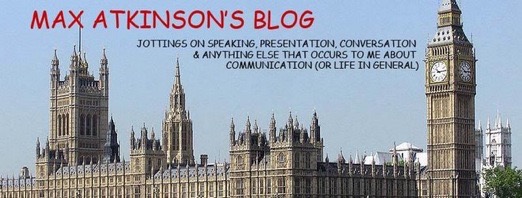 In previous posts (and books), I've written favourably about writing on blackboards and flip charts (e.g. HERE + links).
In previous posts (and books), I've written favourably about writing on blackboards and flip charts (e.g. HERE + links).But on Saturday, in the middle of a lecture to 200+ people, I suddenly realised that there was a rather important point that I'd failed to mention, namely: if the flip chart has wheels, make sure you LOCK THEM before trying to write anything on it.
Disaster averted
As the chart began falling backwards, the screen (on which I was about to show video clips on which the rest of my lecture depended) started to follow suit. Total disaster was only kept at bay by the weight of the curtain behind the stage and the quick reflexes of one of the organisers, who pushed the flip chart back on to the stage and locked its wheels.
A stunt worth repeating?
The huge amounts of laughter prompted by its sudden reappearance have now raised the question of whether such a stunt might be worth developing (and rehearsing) for use on another occasion?
I'm pretty sure that my blood pressure isn't up to risking it again - but, if anyone else would like to try it for themselves, I'd be delighted to hear whether it achieves a similarly positive impact.
